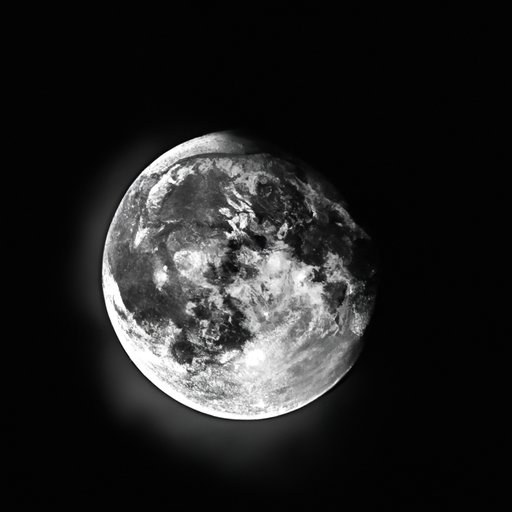
Introduction
Have you ever looked up at the sky during the day and been surprised to see the moon shining bright? While we typically associate the moon with nighttime, its visibility during the day is not uncommon. This phenomenon has puzzled many individuals and has led to various cultural and scientific explanations. In this article, we explore why the moon is visible during the day and debunk misconceptions surrounding its visibility.
Scientific Explanation
The moon’s visibility during the day is due to its position in the sky relative to the Sun and Earth. In simple terms, the moon reflects sunlight, and the reflection is what makes it visible to us. When the moon orbits the Earth, it also follows a slightly different path than the Earth’s rotation. As a result, there are times when the moon is in the sky during the day, and we can see it.
The angle of the moon’s orbit is also a factor that impacts its visibility. At certain times of the year, the angle is such that the moon is more likely to be visible during the day. Additionally, atmospheric conditions such as air quality and levels of humidity can also affect the moon’s visibility. Dust, pollution, and water droplets in the atmosphere can scatter light and make it easier for the moon to be visible during the day.
Cultural and Mythological Interpretations
The moon holds significant cultural and mythological significance in various cultures around the world. For example, in many cultures, the moon is associated with femininity and is seen as a goddess or deity. In ancient civilizations such as the Mayans and Aztecs, the moon was a crucial aspect of their beliefs and rituals. Similarly, the Chinese lunar calendar, which dates back to the 14th century BCE, is still used today to determine important cultural events and celebrations.
Across various cultures and time periods, the moon has also been the subject of myths and stories. One of the most well-known examples is the folklore of the werewolf, which is believed to occur during a full moon. Other cultural interpretations include the belief that the moon impacts human emotions and behavior, such as the term “lunatic” originating from the association of the full moon with madness.
Even today, the moon’s visibility during the day holds significance in cultural practices and celebrations. For example, in some Hindu traditions, observing the moon’s visibility during the day is considered auspicious and is associated with various festivals and rituals.
Misconceptions about Moon Visibility
Many people believe that the moon is only visible during the night when, in fact, it is visible during the day as well. Additionally, some people believe that the moon’s visibility is due to the reflection of the Earth’s atmosphere. While atmospheric conditions can impact the moon’s visibility, it is not the sole reason for its visibility during the day. Debunking these misconceptions is essential to understand why the moon is visible during the day.
Lunar Cycles and its Impact on Visibility
The moon goes through various phases, which also impact its visibility during the day. The full moon, for example, is visible for longer periods and is typically brighter and more noticeable. Similarly, the new moon phase means that the moon is not visible at all. Understanding these lunar cycles is crucial to predict when and how the moon will be visible during the day. There are numerous online tools and apps that can help users track the moon’s visibility and the phases it goes through.
Moon in Popular Culture
The moon has been a source of inspiration for various creative outlets such as literature, art, and music. It has been the subject of countless songs, such as Pink Floyd’s “Dark Side of the Moon,” and has appeared in iconic works of literature like Shakespeare’s “A Midsummer Night’s Dream.” In movies and television, the moon is often used as a visual metaphor to represent romance, mystery, and intrigue. Its perceived visibility during the day has also been incorporated into many artistic works to evoke emotions like longing and nostalgia.
Conclusion
The moon’s visibility during the day is a natural phenomenon that has been studied and discussed for centuries. While science can explain why the moon is visible during the day, cultural interpretations and mythological beliefs offer a unique perspective on its significance. Ultimately, the moon continues to inspire creative works and is a subject of curiosity and fascination for many individuals around the world.




